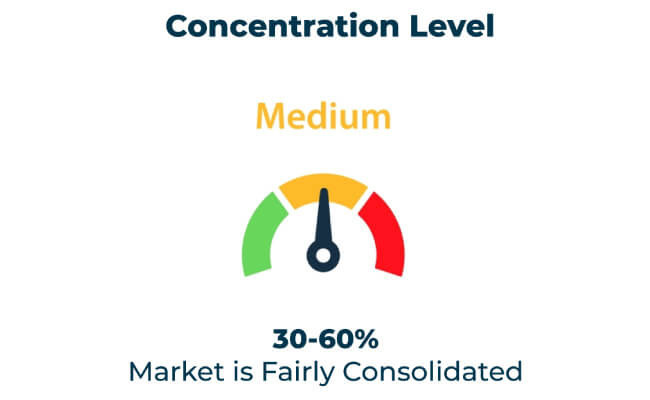The World's spa resorts industry are expanding as consumers' attention now a days focused upon wellness, relaxation & holistic experiences. Market leadership is mostly concentrated, with the Schist group embracing Six Senses, Aman Resorts and Canyon Ranch to achieve add up to market portioning of nearly half. These brands are utilizing destination exclusivity, personalized wellness programs, and leading spa technologies to boost bookings and revenue.
Regional rivals set themselves apart with distinctive wellness offerings - Ayurveda retreats, Thalassotherapy centers, thermal spa resorts. About 35% of the market share is held by key players in this segment, including Ananda in the Himalayas (India), Therme Group (Germany), and Blue Lagoon (Iceland). That market is comprised of mostly boutique luxury spa resorts such as COMO Shambhala and Kamalaya (10%) that emphasize niche holistic wellness experiences, while independent operators (5%) focusing on local traditions and customized treatments.
Explore FMI!
Book a free demo
| Key Players | Market Share (%) |
|---|---|
| Six Senses, Aman Resorts, Canyon Ranch | 50% |
| Regional Competitors (Ananda, Therme Group, Blue Lagoon) | 35% |
| Boutique Luxury Spa Resorts | 10% |
| Independent Operators | 5% |

Top spa resorts like Six Senses and Canyon Ranch are leveraging AI-fueled health evaluations to personalize wellness offerings. For example, Canyon Ranch uses biometric scanning to customize their nutrition and fitness plans, and Six Senses uses AI for sleep improvement programs that better facilitate a guest’s recovery.
Fractional ownership is gaining momentum in the high-end spa market. Aman Resorts also has membership-based wellness retreats, which give exclusive access to private holistic programming and longevity treatments. At the same time, boutique spa resorts such as COMO Shambhala are increasing their subscription-based wellness offerings, targeting high-net-worth individuals HNWIs who want 12-month access to luxury spa facilities.
Healthy eco-awareness programs, maintained by groups like Global Wellness Institute and Healing Hotels of the World, are fueling eco-spa movement by pairing travelers with eco-spa destinations. These programs incentivize guests who choose sustainable spa treatments with green rewards and unique holistic offerings.
Luxury spa retreats, such as SHA Wellness Clinic and Chiva-Som, offer medical-grade wellness solutions to wealthy guests. SHA Wellness Clinic has added genomic testing to precision health plans; Chiva-Som combines Eastern and Western therapies for longevity optimization.
Wellness resorts with a family focus, like Club Med Spa and Four Seasons Wellness Residences, offer spa experiences tailored to multigenerational travel. Club Med Spa also stages parent-child mindfulness retreats, and Four Seasons incorporates wellness-themed programming designed for younger-aged guests into various aspects of offerings.
Spa-integrated work retreats are appealing to remote professionals, with properties like The Retreat at Blue Lagoon and Vana Retreat offering co-living wellness environments. The Retreat at Blue Lagoon melds geothermal-spa treatments with luxury lodgings, and Vana Retreat specializes in Ayurveda-based digital detox programs.
The demand for spa resorts in the emerging markets is growing as, disposable incomes and wellness tourism rises:
Six Senses, Aman Resorts, and Canyon Ranch collectively hold around 50% of the market.
Boutique wellness resorts specializing in holistic retreats and alternative therapies account for 10% of the market.
Regional players like Ananda in the Himalayas, Therme Group, and Blue Lagoon represent 35%, focusing on destination wellness experiences.
Winning Strategies in Social Media and Destination Market Share Analysis: A Competitive Review
Winning Strategies in the Global Tourism Industry Loyalty Program Sector: A Competitive Review
Winning Strategies in the Global Animal Theme Parks Industry: A Competitive Review
Winning Strategies in the Global Winter Adventures Tourism Industry: A Competitive Review
Surrogacy Tourism Industry – Competitive Analysis and Market Share Outlook
China Destination Wedding Market Insights – Growth & Forecast 2025-2035

Thank you!
You will receive an email from our Business Development Manager. Please be sure to check your SPAM/JUNK folder too.